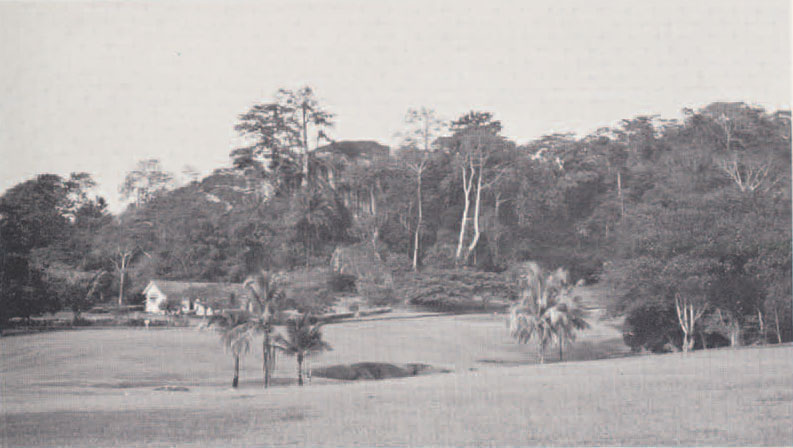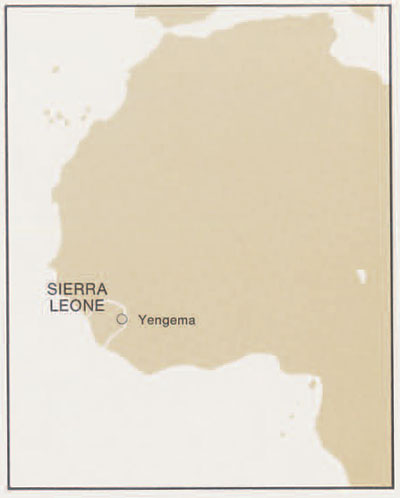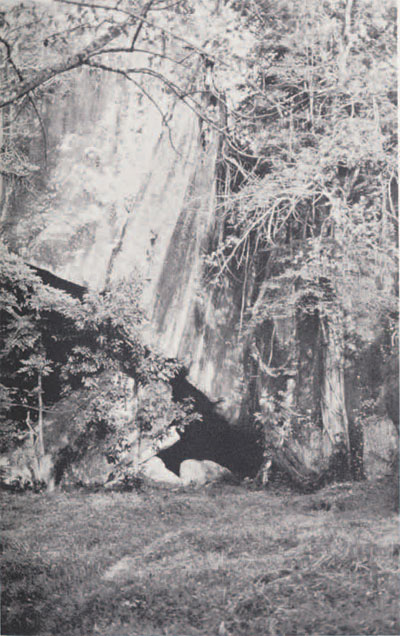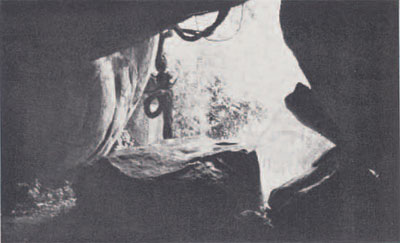




During November, 1965, Mrs. Coon and I excavated a cave at Yengema, Kono District, Southeastern Province, Sierra Leone. We were the guests of the Sierra Leone Selection Trust, Ltd., on whose mining concession the cave is located.
The site is a shelter formed when a huge upright slab of granite fell, to be supported on other rocks. The floor occupies about 100 square meters of space, only about half of which is high enough for a man to stand up in. The cave soil is decomposed granite, locally weathered. There is no evidence of deposition by wind. Like caves found to the north in Guinea, Yengema Cave stands on high ground, dominating the surrounding countryside, and its entrance is partly blocked by a large boulder pitted with smooth concavities in which at one time or another local people had ground their seeds or grain.
We laid out a trench 5 x 2.5 meters in area, and excavated to sterile soil at a depth of two meters. Owing to the presence of rockfall we removed only 22 cubic meters of earth, and found some 17,000 pieces of rock and pottery all of which had been brought into the cave. Commonest was quartz, comprising four-fifths of the whole, dolerite being fourteen percent, the remaining six percent consisting of schist, hematite, quartzite, and one solitary piece of flint. About 900 pieces were implements.
Because quartz is difficult to work, the implements made of it look crude and, being awkward to handle, must have been hafted. They were probably used in sharpening bone implements which have long ago disappeared because the acid soil soon destroys that material.
The dolerite implements could be studied only after much preparation because, in most cases, a lateritic crust which had formed in the soil had to be removed. Some of them were almond-shaped, resembling miniature hand axes, while others were adzes or axes. The schist implements were mostly points or thin knives; the hematite objects took the form of highly polished ornamental pieces, some rectangular, others conical.
The lowest levels of the excavation yielded only quartz; the mid-portion mostly dolerite and schist, accompanied by quartz; and the upper levels were Neolithic, with polished stone axes and pottery. Two pottery samples from the top and the bottom of the Neolithic deposit have been dated at 1500 to 350 B.C. and 2200 to 470 B.C. by the photoluminescence method, in the University Museum.
The quartz industry is one that is widespread in Africa particularly on lakeshores and former river banks; it was used to make harpoon heads for hunting hippopotamus. The dolerite industry is also widespread in the tropical forest area of west and central Africa; these tools were primarily for woodworking, perhaps in making canoes to use in harpooning hippopotami and other riverine animals. The Neolithic of Yengema Cave is an early form of a West African agricultural complex known as the Guinea Neolithic, and the dates obtained from the pottery are the first ones ever found.
At about 1500 B.C. or thereabouts the roof of the cave began to leak during the rainy season, the cave floor was flooded every day, and local people ceased to live there. It became a place of fear and mystery and so remained until excavated.
